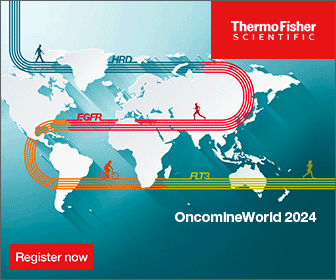JPM22 Highlights: Cell and Gene Therapies Rise Up
Cell and gene therapies show their allure at the 40th Annual J.P. Morgan Healthcare Conference as pharma giants reach out to specialized players in their respective fields. No less than five deals were announced on the first day, which could set the pace for the emerging field for years to come.
Bayer Forges a Mammoth Deal
Bayer kicked off the J.P. Morgan healthcare conference 2022 by announcing a gene therapy deal with Mammoth Biosciences, a company co-founded by Nobel laureate Jennifer Doudna.
The deal gives Bayer access to Mammoth’s CRISPR technology, which could be combined with targeted systemic delivery to edit genes in vivo.
The two companies will first target liver diseases, but the collaboration will involve four other preselected in vivo indications.
Mammoth will receive $40 million upfront from Bayer, and could also receive up to $1 billion in milestones. Bayer will also fund research efforts, and pay tiered royalties up to the low double digits based on sales.
Pfizer and Beam Teams Up for Base Editing Programs
Pfizer and Beam Therapeutics are embarking on a four-year research collab to develop three in vivo base editing programs targeting rare genetic diseases of the liver, muscle and central nervous system.
Beam’s base editing technology edits a single base in the genome instead of creating double-stranded breaks in the DNA, which may result in unwanted modifications. The base editors are delivered to the target organs using Beam’s mRNA and lipid nanoparticles (LNPs).
Beam will conduct research to identify candidates for three undisclosed targets, which Pfizer could choose to license for development and commercialization worldwide. Beam could also hop back in on co-developing a program if it completes Phase 1/2 trials, for a 35% share of net profits.
Carisma’s Macrophage Tech Charms Moderna
Having proven the power of mRNA technology during the Covid-19 pandemic, Moderna is now turning its attention to cancer. The mRNA leader has reached out to Philadelphia-based Carisma Therapeutics to advance in vivo engineered chimeric antigen receptor monocytes (CAR-M) for the treatment of cancer.
Moderna’s mRNA and LNP technologies, coupled with Carisma’s expertise in engineered macrophage biology, will allow the editing of monocytes and macrophages within the body, modifying them to target cancer. Products will be off-the-shelf, and may address the challenges typical CAR T-cell therapies face, such as penetrating solid tumors.
Carisma will get a modest $45 million upfront and a $35 million investment from Moderna, as well as milestones and royalties on product sales. Carisma will receive research funding from Moderna to discover potential candidates, while Moderna will take over the development and commercialization of up to 12 targets.
Bristol-Myers Squibb and Century Enters Race for Allogeneic Cell Therapies
Bristol-Myers Squibb and Century Therapeutics are partnering to develop up to four induced-pluripotent stem cell (IPSC)-derived natural killer (NK) and/ or T-cell therapies for blood cancers and solid tumors.
The first program is in acute myeloid leukemia, while the second program will cover multiple myeloma. BMS could also opt to add two more programs.
Century will handle discovery and preclinical development of candidates, while BMS will head clinical development and commercialization. BMS is paying Century $100 million upfront and $50 million in equity. BMS will also cover Century’s preclinical development costs. Notably, Century could stand to receive up to $3 billion in milestones across the four programs.
Sarepta Anticipates Approval for Gene Therapy for Muscular Dystrophy Next Year
Sarepta Therapeutics revealed plans to ask the FDA as soon as next year for approval of its gene transfer therapy for Duchenne muscular dystrophy (DMD). Sarepta’s optimism stems from positive results of Part 2 of its trial on SRP-9001, which showed highly statistically significant improvements at 48 weeks in patients taking a functional motor ability test.
SRP-9001 is a gene transfer therapy that delivers the micro-dystrophin gene to muscle tissue, restoring micro-dystrophin production which was lost in DMD.
The most common side effect observed in the second part of the trial was vomiting, which was in line with the adverse events observed in the first part. However, the researchers did note increased levels of a liver enzyme in the first part.
©www.geneonline.com All rights reserved. Collaborate with us: service@geneonlineasia.com








